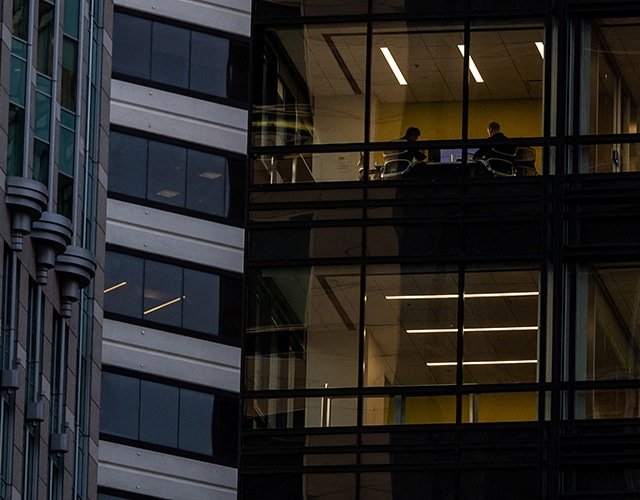Remote work has caused a “black hole” in U.S. office occupancy, knocking demand significantly below pre-pandemic levels and vacancy rates to historic lows, with a recovery to prior usage unlikely for years, said real estate analysis firm Green Street.
In addition to the decline in demand due to working from home, the office sector also faces headwinds from companies that are now more cost-conscious with their budgets, the firm said.
The result has caused cumulative net absorption — the amount of leased space less what has been vacated — to have declined by 130 million square feet (12.1 million square meters) of U.S. office space since 2020 COVID-19 pandemic, the firm said in a note called “The Black Hole of Office Occupancy” on Thursday.
“The last four years of disruption in the office market have been the worst on record,” said Newport Beach, California-based Green Street. “The cumulative amount of office space vacated since ’19 surpasses the amount seen during the dot-com bubble and dwarfs that of the Global Financial Crisis.”
Available office space was about 25% of existing supply at the end of 2023, both historic highs.
Five years to reach pre-pandemic levels
For U.S. office occupancy to reach pre-pandemic levels it would take five years based on ambitious assumptions, such as an absorption rate of new supply on par with 2019 when the economic outlook and strong expected job growth made demand better.
A realistic recovery scenario suggests about 1% office-using job growth and less than 1% supply growth over the next five years would result in U.S. occupancy rates not recovering to 2019 levels for a long while, the firm said.
The peak dot-com occupancy levels of office space of the late 1990s have not been reached since then, and it took 11 years after the 2007-2008 global financial crisis to recover to pre-GFC occupancy levels.
Prior recoveries in U.S. office occupancy have been mostly “V-shaped” in nature – a sharp rebound from a big decline. When the economy sours, companies cut jobs and vacate space, while the opposite happened once the economy turned north.
This cycle, however, is likely to play out differently as it will take a lot more new jobs to generate the same level of office demand as in the past because remote work will act as a long-term headwind on office demand.
This article was provided by Reuters.







